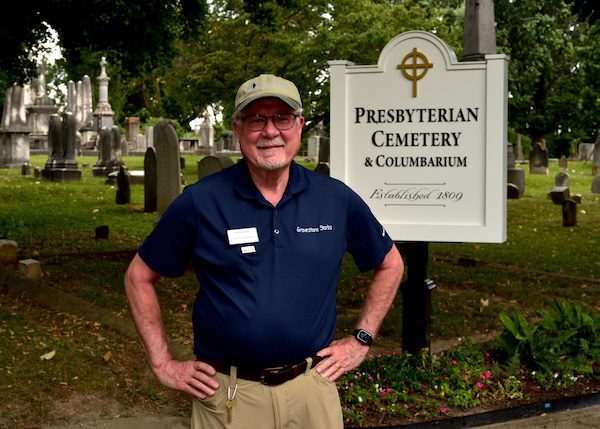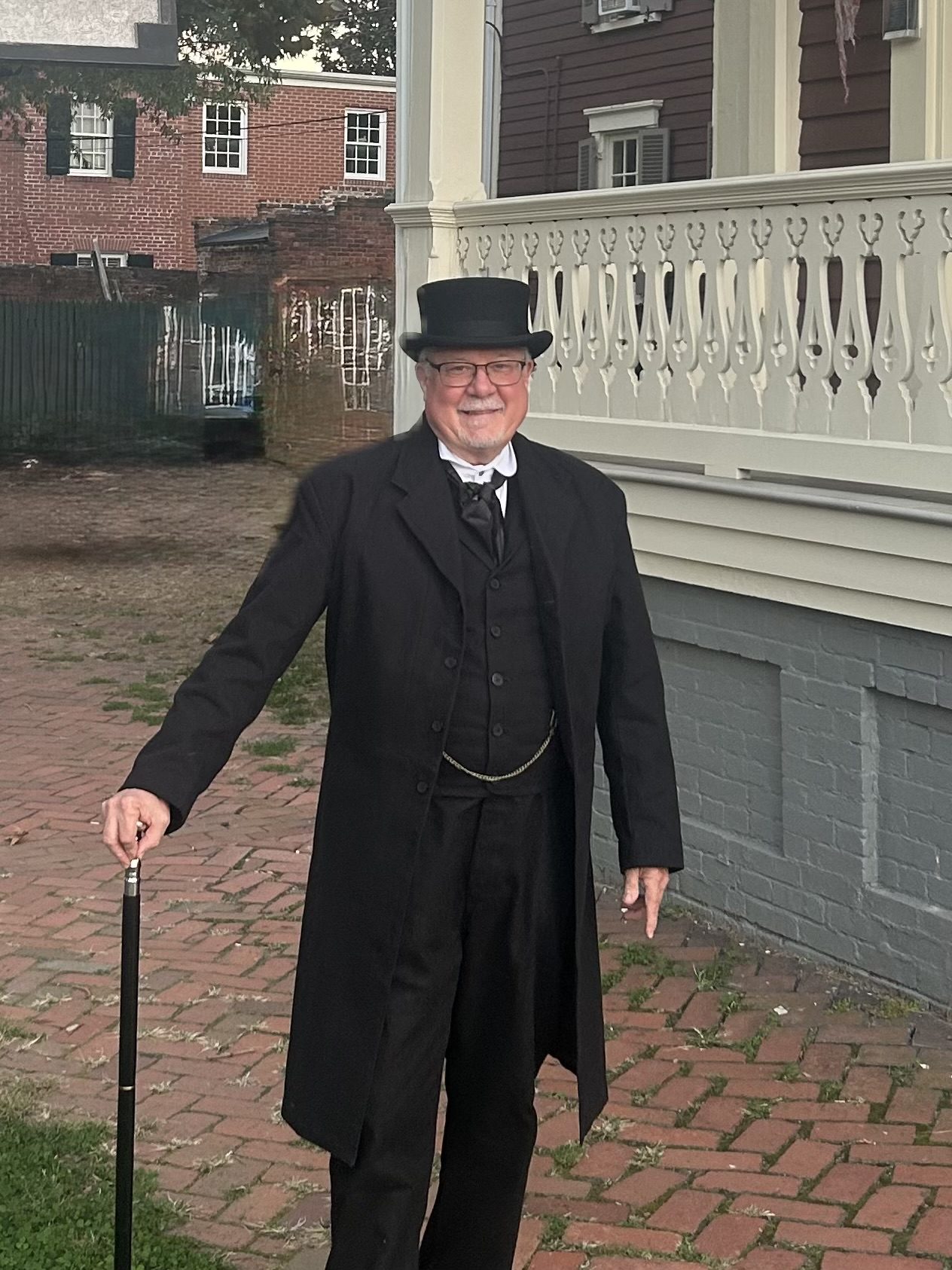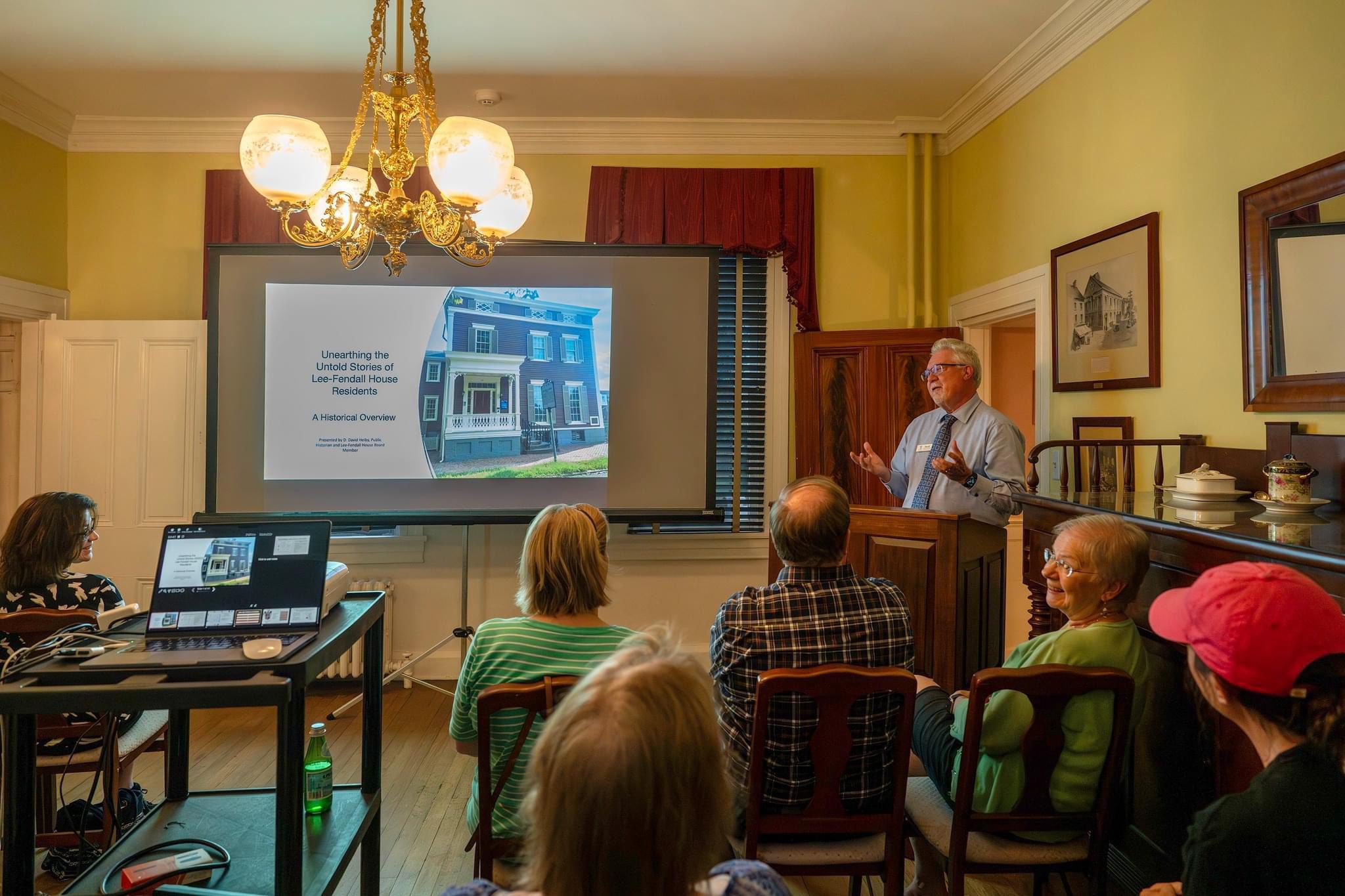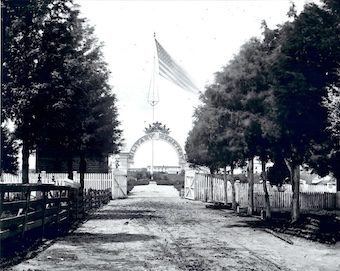Introduction
Founded in 1809 amid a significant schism within Alexandria’s historic Christ Church, St. Paul’s Episcopal Cemetery is one of the earliest purpose-built burial grounds within what is now the Wilkes Street Cemetery Complex. The breakaway group that formed St. Paul’s parish did so nearly a decade before their new sanctuary was completed. With Alexandria prohibiting new in-town burials for public health reasons that same year, the fledgling parish established its cemetery first — marking a decisive shift away from crowded colonial churchyards toward larger, organized cemeteries beyond the city center.
Only later, in 1818, was St. Paul’s Latrobe-designed church building on South Pitt Street consecrated, giving the parish both a modern sanctuary and a burial ground already rooted in the community.
Although closely tied to the parish, St. Paul’s Cemetery has always been more than a congregational burying ground. Not all of its interred were members of St. Paul’s; some early parishioners chose Christ Church or other burial sites, while the cemetery also welcomed Alexandrians from across the city. Today, more than 1,500 individuals rest here, including members of many of Alexandria’s most prominent families — Fairfax, Hooff, Zimmerman, Peyton, Corse, McLean/McClean, Entwisle, Smoot, and others whose names echo throughout the city’s history.
The historical record is incomplete. Many early documents were lost in a 1950s funeral home fire and a flood at Smoot Lumber Company. Remaining sources include an 1857 lot-owner list, a record of more than 300 burials by 1861, 1,309 gravestone inscriptions recorded in 1979, a 1948–49 plot map, and entries preserved in a vintage card catalog still held in the parish office.
Administration evolved over time as well. Once managed by a sexton, the cemetery came under the vestry’s direct oversight by the mid-20th century and is now maintained as part of the church’s operating budget.
Recognized for its historic landscape and cultural significance, St. Paul’s Cemetery is listed on the National Register of Historic Places (DHR #100-0143). It remains a sacred site of remembrance and one of the city’s richest outdoor archives — a place where Alexandria’s history can be read in stone, from Revolutionary-era families and War of 1812 officers to Civil War figures, civic leaders, entrepreneurs, and the city’s enduring legends, including the Female Stranger.
C
Thomas Wells Childs: the Heroic Soldier from the Mexican War Buried in St. Paul’s Cemetery
Thomas Wells Childs, a heroic soldier from the Mexican War, is buried in St. Paul’s Cemetery. Childs was born on March 16, 1796, in Pittsburgh, Massachusetts. He graduated from West Point, the United States Military Academy, in 1814 and was promoted to Third Lieutenant in the 1st Artillery on March 11, 1814. Read more at this [link].
Montgomery Dent Corse (March 14, 1816 – February 11, 1895) Forging a Path from Battlefields to Banking: The Extraordinary Story of a Civil War Veteran
Montgomery Dent Corse was born at 504 Prince Street in Alexandria, Virginia on March 14, 1816, the eldest son of John and Julia Corse. He attended Major Bradley Lowe’s military school at Colross and Benjamin Hallowell’s school on North Washington Street.
As a young boy, Corse witnessed Marquis de Lafayette’s 1824 visit to Alexandria and participated in the inauguration of President Andrew Jackson in 1829.
In 1846, Corse mustered a company of volunteers for service in Mexico, serving as their captain. Initially gaining recognition during the Mexican War, he sailed for California in 1849 and participated in gold mining.
Although he made a short visit to Alexandria in 1855, he did not permanently return until December 1856. In 1857, he embarked on a new venture by establishing a banking business with his brothers, J.D. and Wilmer D. Corse.
Corse served as first lieutenant of the Alexandria Home Guard in 1859 and was elected captain of the Old Dominion Rifles on January 7, 1861. With the onset of the Civil War and Virginia’s secession from the Union in 1861, Corse assumed a pivotal role. He was appointed Colonel of the 17th Virginia and aligned with Longstreet’s Corps, subsequently serving under Kemper’s Brigade. The 17th Virginia took part in significant battles, including First Manassas, Yorktown, Williamsburg, Seven Pines, and the Seven Days. The regiment’s involvement extended to pivotal conflicts like South Mountain and Antietam, during which Corse was wounded. His distinguished actions at Antietam promoted him to the rank of General.
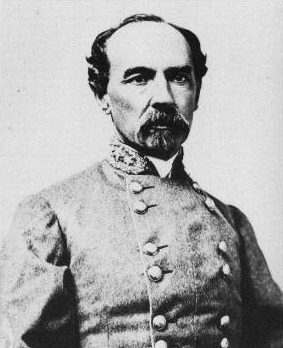
Although the 17th Virginia was detached during the Gettysburg Campaign and thus absent from that battle, they remained active in subsequent engagements, notably the siege of Petersburg and Richmond. Corse’s journey took an unfortunate turn at the Battle of Sayler’s Creek, where he, along with a considerable portion of Lee’s Army of Northern Virginia, was captured and subsequently sent to Fort Warren in Boston as a prisoner of war.
After taking the Oath of Allegiance and being released from Fort Warren on July 24, 1865, Montgomery Dent Corse returned to Alexandria and resumed his career in banking alongside his brothers. He made his home at 414 North Washington Street, a distinguished Greek Revival residence known as Grosvenor House — later also referred to as the Corse-Leadbeater House — originally constructed around 1830 for Anthony Cazenove. During the Civil War, the house had been repurposed by Union forces as Grosvenor House Hospital, capable of caring for over 160 patients, with the Lee-Fendall House, located directly across the street, serving as an annex. In the postwar years, Corse lived there with his wife, Elizabeth, and raised their four children until they died in early 1895.
The house later passed to new owners, including the Leadbeater family, and was eventually dismantled in 1960. Today, a large office building occupies the site where Grosvenor House once stood. Anthony Cazenove, for whom the home was originally built, is buried nearby in The Presbyterian Cemetery, located just across Hamilton Lane from St. Paul’s Cemetery.
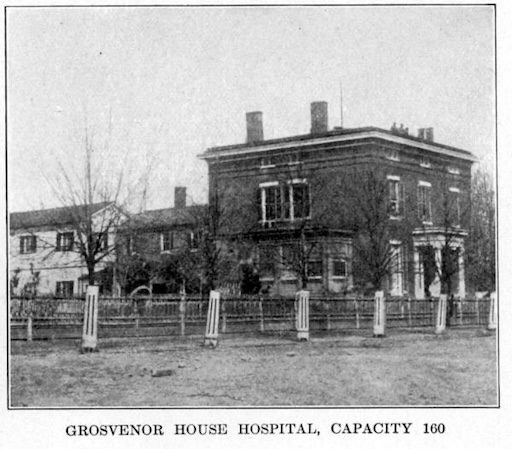
Corse remained actively involved in veteran affairs after the war, serving as a charter member of the R.E. Lee Camp of the United Confederate Veterans. His life was marked by a notable incident in 1870, when he was seriously injured during the collapse of part of the Virginia State Capitol building in Richmond. On April 27 of that year, the floor of a crowded courtroom gave way without warning, plunging hundreds of people into the Hall of Delegates below. More than sixty people were killed and over one hundred were wounded. Corse survived but suffered lasting injuries, including partial blindness for several years.
Despite these hardships, Corse continued his public life. On May 24, 1880, he was a distinguished guest at the dedication of the Confederate monument Appomattox at the intersection of Washington and Prince Streets in Alexandria. This monument would later be placed on the National Register of Historic Places by the National Park Service in 2017.

However, this monument faced its own tumultuous history when, amid nationwide protests following the murder of George Floyd in May 2020, it was removed on June 2, 2020, as vandals targeted segregation-era statues. The base of this monument has since been restored and relocated to Bethel Cemetery, near Corse’s grave, with the statue itself currently in storage, awaiting a future reinstallation. Montgomery Dent Corse passed away on February 11, 1895, followed closely by his wife, Elizabeth, just two weeks later, marking the end of their deeply connected lives.
An intriguing detail marks Corse’s life story: he has two gravestones, one of which erroneously states his birthday as March 18, 1816.
| MONTGOMERY DENT CORSE Born in Alexandria, Virginia March 14, 1816 Died in Alexandria, Virginia Feb. 11, 1895 | MONTGOMERY DENT CORSE BGEN 17 VA INF Confederate States Army Mar 18 1816 (Maltese Cross) Feb 11 1895 Presented by M.O.S. & B. Samuel Cooper Chapter |
D
Julius Adolphus De Lagnel (1827 – 1912) Military Leadership in the Civil War: Served as a Confederate Army Brigadier General
Julius Adolphus De Lagnel (1827–1912) was a Confederate Brigadier General in the Civil War. He initially served as a 1st Lieutenant in the Union Army but switched sides to support the Confederacy. He fought alongside General Garnett, getting wounded and captured at the Battle of Rich Mountain. De Lagnel later became a Major in the 20th Battalion Virginia Artillery and a Lieutenant Colonel in the Confederate Ordnance Department. While he was promoted to Brigadier General in 1863, he declined the position and continued as a Colonel. He served as a senior officer inspector of arsenals in Richmond, Virginia. After the war, he worked in shipping out of Washington, D.C., and in the Pacific steamship service. He passed away on June 3, 1912, in Washington, D.C., and was laid to rest at the St. Paul’s Episcopal Church cemetery in Alexandria, Virginia.
Born on July 24, 1827, in Newark, New Jersey, his parents were Captain Julius Adolphus De Langel and Harriet Sanford. He had two wives: Madeline (1843–1900) and Josephine Conklin Cowles (1846–1931). Before the war, he served in the United States Army, rising to 1st Lieutenant. He resigned from the Union Army on May 17, 1861. During the Civil War, he held various roles, including Chief of Artillery to Brig. General Robert S. Garnett defended Rich Mountain, was wounded and captured, and eventually attained the rank of Brigadier General, though he declined the commission. After the war, he engaged in the Pacific Steamship Service business. He died of heart disease at age 84 on June 3, 1912, in Washington, D.C.
| In memoriam JULIUS A. DeLAGNEL born July 24, 1827 Lieut. 2nd Regiment of Artillery U. S. Army from March 1847 to May 1861 Capt. and Col. of Artillery of Confederate States Army during the Civil War died June 3rd 1912 A brave and distinguished officer Considerate of the welfare of his men beloved by them and honored by his country as well as by his companions. A Southern gentleman, One who lived and died without fear and without reproach |
H
James Hooff (February 18, 1825 – November 30, 1915)
James Wallace Hooff, born in 1825 in Alexandria, led an extraordinary life marked by unwavering commitment and love. He defied societal conventions by marrying his second cousin, Jannett Hooff Brown, following a courtship that raised eyebrows due to their differing religious backgrounds—he was Presbyterian, and she was Episcopalian.
One remarkable relic from their secret courtship is a letter from 1847, showcasing the famed “Alexandria Blue Boy” stamp. This postage rarity fetched a staggering $1 million in 1981 and is now valued even higher.
James and Jannett had three children, their eldest being Mary Goulding Hooff Fawcett, born on December 1, 1853, followed by their son Douglas, born on September 18, 1858.
Before the outbreak of the Civil War, James served as the Deputy Collector and Inspector of Weights & Measures for Alexandria City. During the conflict, he demonstrated immense dedication to his faith and community by safeguarding his church’s precious silver communion goblets. He buried them in the yard of his residence at 517 Prince Street, Alexandria, VA, to protect them from potential theft by Union soldiers.
James Hooff’s service extended beyond the war as he dedicated 54 years to the War Department, remaining energetic and devoted until his final days. He passed away at the age of 91 of capillary bronchitis at his home, leaving behind a profound and lasting legacy within his community. He was buried in lot 65 – Celtic Cross.
Lawrence Hooff Jr. (1780 – March 10, 1842) Vital Role in History: A Key Washington Bier Carrier
Lawrence Hooff Jr. was one of the four Lieutenants from the 106th Regiment of the Virginia Militia who participated in carrying George Washington’s casket to the original tomb on December 18, 1799. He owned the property at 210 North Fairfax Street in Alexandria, Virginia, and is interred in the family vault in St. Paul’s Cemetery.

He also held the rank of Major during the War of 1812 and took part in the Battle of White House Landing.
J
Reverend and Mrs. James T. Johnston – Affectionately Known as “Parson Johnston!”
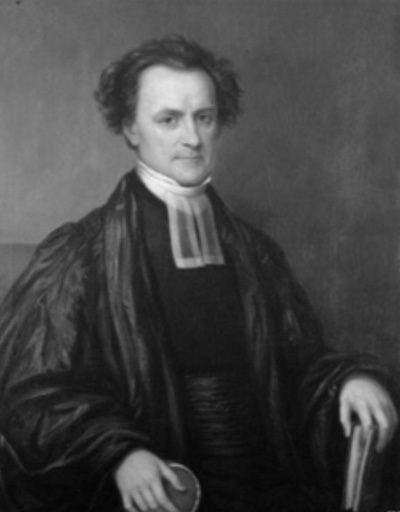
Reverend and Mrs. James T. Johnston, known affectionately as “Parson Johnston,” have a notable history intertwined with St. Paul’s Church and Alexandria. Born in Savannah, Georgia, Reverend James T. Johnston, a Yale University graduate with a background in law, made the pivotal decision to pursue a career in the ministry. After completing his theological studies at the New York Theological Seminary, he was called to lead St. Paul’s Church, a position he held with unwavering dedication from 1834 to 1859. Remarkably, despite tempting offers to helm prosperous churches, including the prestigious Trinity Church in New York City, he remained loyal to St. Paul’s.
Unfortunately, Reverend Johnston’s tenure at St. Paul’s was cut short in 1859 due to declining health, leading to his resignation. Mrs. Jane Sanford Johnston, a New York City native, shared her husband’s commitment to the church and their community.
In 1851, the Johnstons constructed an elegant brick house at 806 Prince Street, which they called home until May 1861. Tragically, the outbreak of the Civil War resulted in the confiscation of their property by Federal Authorities. During the war, Johnston’s residence served as a branch of the General Hospital (Mansion House) from March 1862 to September 20, 1862. It later became part of the 2nd Division General Hospital in Alexandria along with the Fowle house opposite Prince Street.
Following the war, the Johnstons returned to 806 Prince Street, where they resided until their passing. He died February 27, 1887; she died August 2, 1884.
In 1884, the building assumed a new purpose as the headquarters for the Robert E. Lee Camp of Confederate Veterans. It is the Robert E. Lee Camp Hall Museum, overseen by the Mary Custis Lee-17th Virginia Regiment Chapter #7 of the United Daughters of the Confederacy.
| Rev. JAMES T. JOHNSTON born in Savannah, Ga. July 4, 1797 Died in Alexandria, Va. February 28, 1877. His record is on High. Mrs. JANE JOHNSTON died August 2nd, 1884 aged 85 years. We took sweet counsel together, and walked unto the house of God in company |
K
Delaware Kemper (1833–1899) Confederate Artillery Officer, Educator, U.S. Consul, and Alexandrian Civic Leader
Delaware Kemper was born in 1833 and rose to prominence as captain of the Alexandria Light Artillery, part of Brig. Gen. P. G. T. Beauregard’s short-lived Confederate Army of the Potomac. His battery played a key role in the skirmish at Blackburn’s Ford on July 18, 1861, and again during the First Battle of Bull Run three days later. Stationed on a hilltop overlooking Cub Run, Kemper’s guns shattered the Union retreat when a wagon overturned on the bridge—an action that helped turn withdrawal into the chaotic rout remembered in the Southern press as “The Great Skedaddle.”
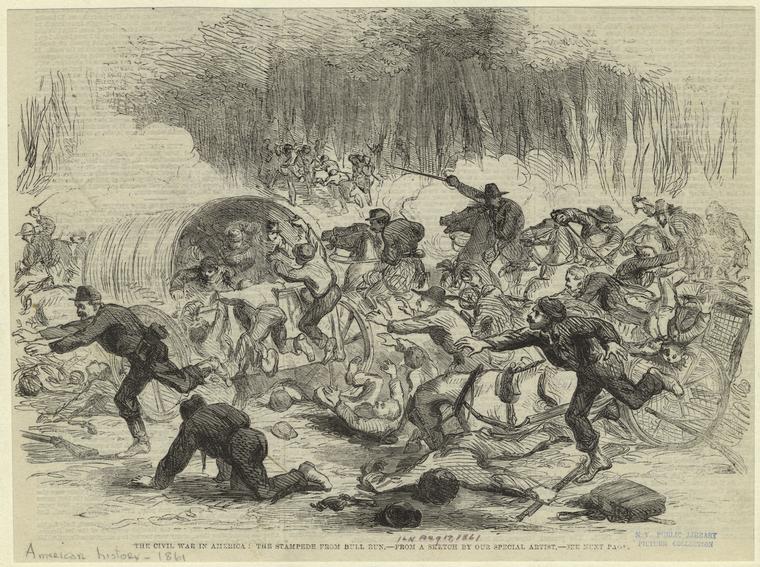
Wounded at Second Manassas in 1862, Kemper recovered and continued to rise through the Confederate artillery. He served as Major in S. D. Lee’s Battalion, later as Lieutenant Colonel under Beauregard in Charleston, and was promoted to Colonel of Artillery in 1864 under Gen. Joseph E. Johnston. He remained in command until the surrender with Johnston’s army in April 1865.
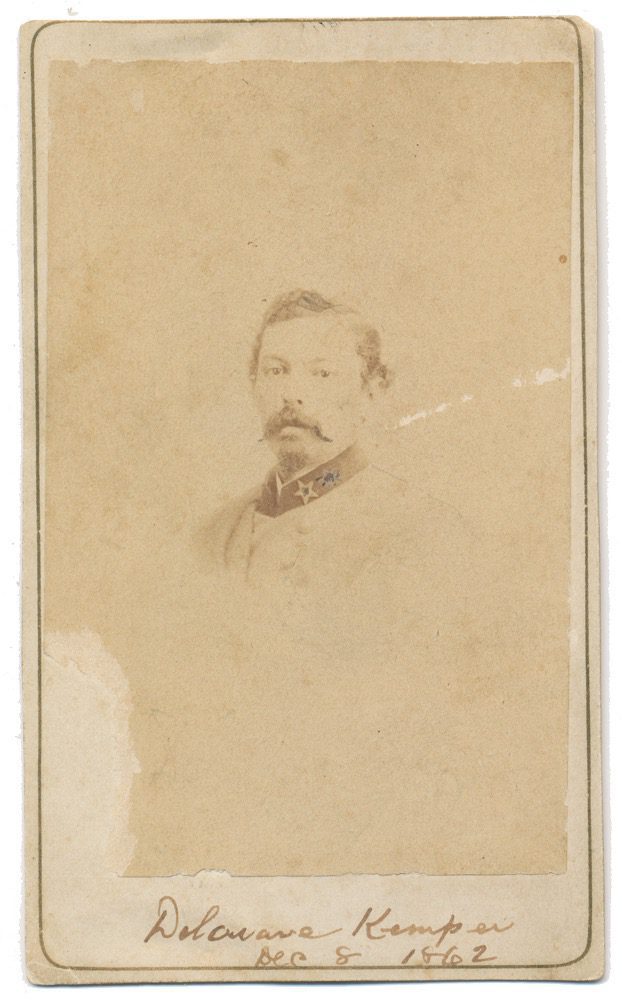
After the war, Kemper turned to education. He opened a boys’ school in the Alexandria Lyceum, then became Professor of Mathematics at Hampden–Sydney College (1866–1882), later teaching at the Citadel in Charleston and King College in Tennessee. In 1871 he married Frances Snowden Hays. President Grover Cleveland later appointed him U.S. Consul at Amoy, China. Returning home, he entered the newspaper business in Alexandria and also served as captain of the Friendship Fire Company.
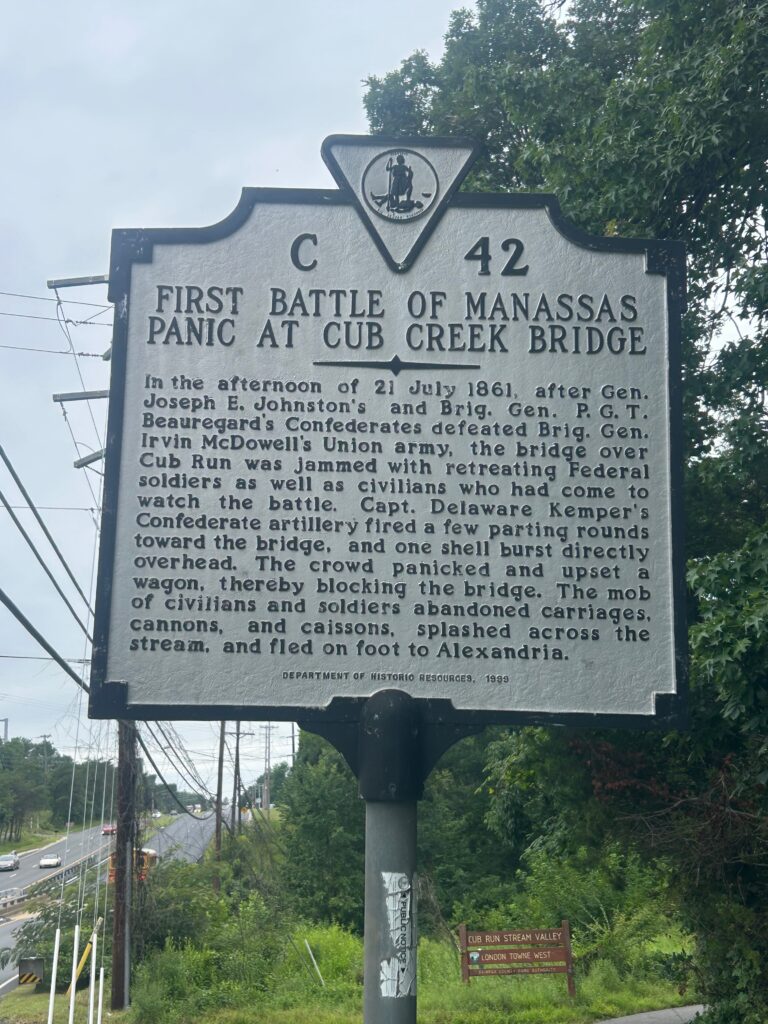
Delaware Kemper died in Alexandria on June 30, 1899. He rests in St. Paul’s Cemetery, where his fractured gravestone still awaits repair—a reminder of a man who left his mark on the battlefield, the classroom, and his community.
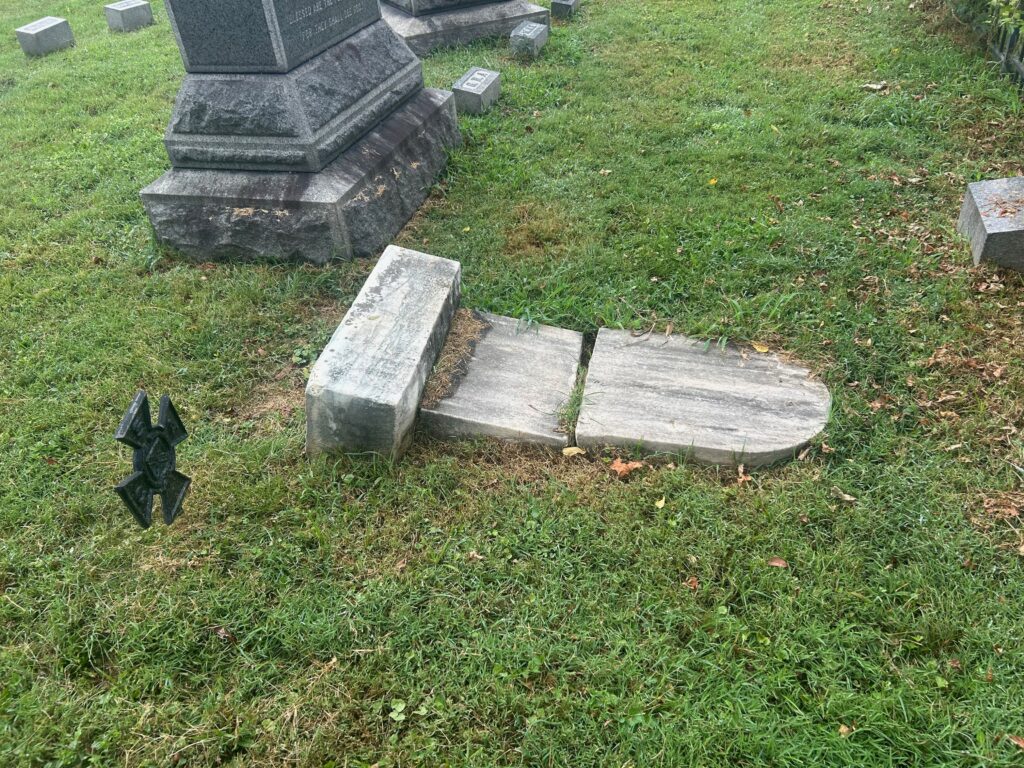
| DELAWARE KEMPER born August 24, 1833 died June 30, 1899 |
Inscription on Delaware Kemper’s gravestone in Lot 228, St. Paul’s Cemetery. The plot also features a Confederate Iron Cross, a small footstone marked “D.K.,” and lies beside his brother’s grave, Kosciusko Kemper.
Kosciusko Kemper (June 18, 1835 – January 26, 1910): A Life of Gallantry, Education, and Civic Virtue in Virginia’s History
Kosciusko Kemper (1835-1910) was a distinguished figure in Virginia’s history, known for his multifaceted contributions to society. Born on June 18, 1835, in Warrenton, Virginia, Kemper was educated at the University of Virginia, excelling as a scholar. His academic prowess led him to woo and marry the daughter of Ira Garrett, a court clerk in Albemarle County. Together, they raised a family of brave sons and pure daughters.
A blend of military service, educational leadership, legal practice, and civic involvement marked Kemper’s life. During the Civil War, he volunteered for the Confederate States Army, serving notably at Fort Sumter. General Beauregard’s dispatches highlighted his gallantry and dedication, leading to his promotion to lieutenant.
After the war, Kemper returned to Alexandria, Virginia, where he embarked on a legal career. His commitment to education made him the Superintendent of Alexandria City Public Schools, serving from 1892 to 1908. His tenure was marked by high zeal and inflexible fidelity. Additionally, he twice served as the Mayor of Alexandria in 1874-75, 75-76, and 77-78, and was a Vice-President of the Alexandria Library Company in the 1870s.
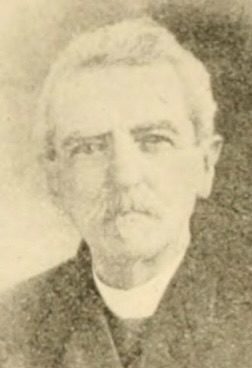
Kemper’s legal practice was based at 56 King Street, as recorded in Chataigne’s Directory of the 1870s, and he lived at 108 Cameron Street in 1873. He was also involved in historic preservation, being a member of the Board of Managers of the Society for the Restoration of Historic Alexandria.
His Masonic journey was equally illustrious. Initiated in 1875, he rose rapidly, becoming the 67th Grand Master of Masons in Virginia. Kemper’s Masonic contributions were marked by his wisdom and adherence to its principles. Despite declining health, his commitment to Freemasonry remained unwavering.
Kemper was a devout member of the Presbyterian Church, serving as an elder and exemplifying Christian virtues. His life was characterized by tenderness, bravery, gentleness, and unflinching courage. He passed away on January 26, 1910, in Washington, D.C., leaving a legacy of a life lived without blemish and an enduring memory in the hearts of those who knew him. He was laid to rest at St. Paul’s Cemetery, and the Grand Lodge of Virginia commemorated his life and contributions as a testament to his exalted worth.
| KOSCIUSKO KEMPER born June 18, 1835 died Jan. 26, 1910 C.S.A. |
Robert Knox: Soldier, Civic Leader, and Faithful Alexandrian
Born in Warrenton, Virginia, in 1836, Robert Knox moved with his family to Fredericksburg and later to Alexandria, where he spent the majority of his life. He was the son of John S. Knox and Ann Selden. At the outbreak of the Civil War, Knox enlisted on April 25, 1861, as a 2nd Lieutenant in Company G, 17th Virginia Infantry, part of Corse’s Brigade in Pickett’s Division, 1st Corps, Army of Northern Virginia.
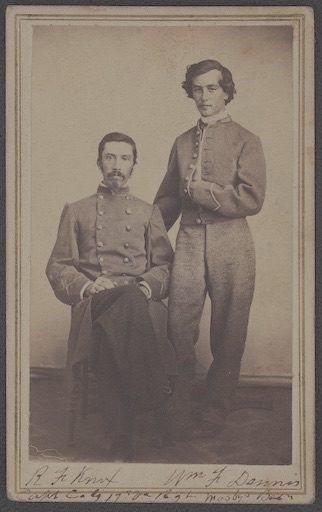
Knox saw extensive combat during the war. He was wounded in the thigh at the Battle of Seven Pines in 1862, promoted to Captain the same year, and later suffered further injuries at Drewry’s Bluff in 1864 and Dinwiddie Court House in 1865. Despite these setbacks, he continued to serve until he was paroled on May 13, 1865.
After the war, Knox returned to Alexandria and became a prominent figure in the community. He worked as a commission merchant and served as Commissioner of Revenue for the city. A dedicated parishioner, he was a vestryman at St. Paul’s Episcopal Church. Knox resided at 521 Duke Street, where he passed away from pneumonia on April 2, 1916. He was survived by his wife and left behind a legacy of service to both his country and his city.
| ROBERT FITZGERALD KNOX son of John Somerville and Elizabeth Selden Knox born on Nov. 19, 1835 died April 2, 1916 Captain Co. G, 17th Va. Regt. C.S.A. None knew thee but to love thee Nor named thee but to praise |
L
Adam Lynn, Jr. (1775 – December 6, 1835) Diverse Path of Service: Silversmith, Justice of the Peace, and Lieutenant Colonel in Alexandria Militia during the War of 1812.
Gen Adam Lynn was the son of Revolutionary War colonel Adam Lynn. He likely became the brother-in-law of jeweler Josiah Coryton, taking over his business in 1801. He was the uncle of Ann Eliza Childs, buried in the same lot.
During the War of 1812, Adam Lynn served as a lieutenant colonel. He worked as a silversmith, clockmaker, and merchant at Adam Lynn & Co on King and Royal Streets in peacetime. He was a member of Masonic Lodge 22 and held public roles like justice of the peace, clerk of Common Council, and magistrate.
Gen Lynn was involved in various roles at St. Paul’s Episcopal Church, including being the first vestryman, pewholder, and contractor for church hardware. His name appeared on Rev. William Jackson’s calling list, and he lived in the first division, south of King and east of Asaph. Read more at this [Link]
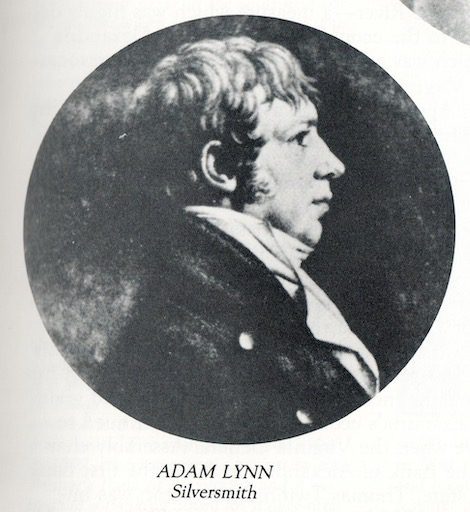
| Sacred to the memory of GENERAL ADAM LYNN who after a severe and lingering illness which he bore with Christian fortitude calmly resigned his soul to his Redeemer in whom he alone trusted for salvation on the 6th of Dec. 1836 Aged 61 years Hallowed be this spirit belonged… until the … |
M
Wilmer McLean (May 3, 1814 – June 5, 1882) – Witness to the Commencement and Conclusion of the American Civil War
Discover the extraordinary life of Wilmer McLean, a man whose journey weaves through the very fabric of American history. Born into a legacy tied to St. Paul’s Episcopal Church in Alexandria, McLean’s life changed dramatically when he married Virginia Hooe Mason in 1853. Their union brought together families, histories, and a sprawling estate named Yorkshire, poised on the brink of America’s most tumultuous era.
As the Civil War erupted, McLean’s home at Yorkshire was at the epicenter of the First Battle of Bull Run, enduring the scars of battle and the weight of history. Seeking refuge, McLean moved his family to the quiet hamlet of Appomattox Courthouse, only to find destiny knocking on his door. It was in their parlor that a pivotal moment in history unfolded: the meeting of Generals Lee and Grant, signaling the end of the Civil War.
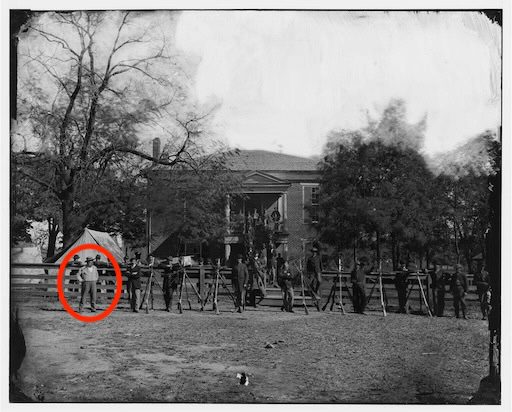
Join us on a captivating journey through McLean’s life, from the serene pews of St. Paul’s to the frontlines of American history, culminating in his final resting place at St. Paul’s Cemetery. This is a tale of a man, a family, and a nation forever changed by the currents of history.
Read the full blog post → [link to story].

| WILMER McLEAN Son of Daniel & Lucretia McLean Died June 5, 1882 In the 68th year of his age |
Abraham Charles Myers: The Namesake of a Florida City (May 14, 1811 – January 29, 1889)
He served as a military officer in the United States and the Confederacy, with experience as a veteran of the Seminole Wars. Eventually, he was reassigned to the Quartermaster Department, where his term was primarily characterized by ineffectiveness. His lack of competence led to his removal in early 1864.
Read the blog The Unique Engagement Gift for the rest of the story.
P
Dr. Holmes Offley Paulding (October 7, 1852 – May 1, 1883: From Family Military Heritage to Little Big Horn Chronicles
The life of Dr. Holmes Offley Paulding was a remarkable journey through pivotal moments of American history, deeply rooted in a family legacy of military service.
Born into a lineage that included Revolutionary War hero John Paulding and esteemed naval officer Hiram Paulding, Holmes chose a different path, embracing military medicine.
His life intersected with crucial events like the Battle of the Little Big Horn, where he documented the harrowing aftermath. Despite his family’s naval heritage, Holmes’ career in military medicine set him apart, creating a unique narrative within the storied Paulding lineage.
His untimely demise at just 30, while serving in the military, marked both a personal and historical loss.
Holmes’s final resting place in St. Paul’s Cemetery symbolizes the end of his individual story and the closing chapter of a family that shaped American history from the Revolutionary War to the Wild West.
His life story, preserved in detailed diary entries and historical accounts, offers a window into America’s past, showcasing the sacrifices and contributions of a family that stood at the crossroads of the nation’s defining moments.
Read the full blog post → [link to story].
| HOLMES OFFLEY PAULDING Captain and Assistant Surgeon U. S. Army died May 1, 1883 aged 30 years |
S
Minna Simms and Aida Lester Simms: The Infamous Siblings Behind Chicago’s Most Notorious Brothel
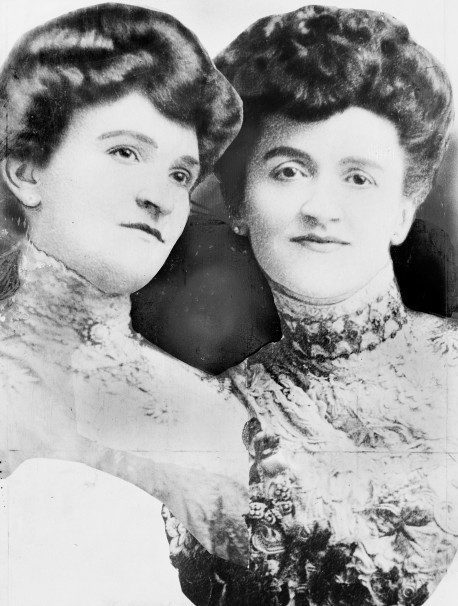
Minna Simms (born July 13, 1866, and died September 16, 1948) and Aida Lester Simms (born February 15, 1865, and died January 3, 1960) were responsible for running and managing a well-known brothel in Chicago. They operated this establishment from 1900 to 1911.
Read the blog The Most Notorious Brothel in Chicago! For the rest of the story.
The Enigmatic Woman: Remembering Alexandria’s Most Visited Grave – The Female Stranger (February 1793 – October 14, 1816)
In September of 1816, a pair disembarked from a ship from the West Indies and made their way to Gadsby’s Tavern. The woman was adorned with a black veil and ailed from typhoid or yellow fever. A valet and a French-speaking maid were in their company. When they arrived, they requested that their identities be kept secret. With assistance from Elizabeth Tretcher Steuart (1795 – November 26, 1854), who lies in the Presbyterian Cemetery (42:60), Doctor Samuel Richards cared for the ailing woman. Mrs. Steuart portrayed her as young and stunningly beautiful. Tragically, the woman died on October 14th, embraced by her husband, who subsequently bought a burial plot in St. Paul’s Cemetery and ordered a monument for her grave following the funeral. The man, along with the valet and maid, then vanished without a trace. A payment of $1500 in English currency for all expenses—including accommodation, meals, healthcare, the funeral, plot, and monument—turned out to be fraudulent. Their true identities remained a mystery, unknown to the tavern keeper, Dr. Richards, or Elizabeth Steuart.
| To the memory of a FEMALE STRANGER whose mortal sufferings terminated on the 14th day of October 1816 Aged 23 years and 8 months This stone is placed here by her disconsolate Husband in whose arms she signed out her lastest breath and who under God did his utmost even to sooth the cold dear ear of death How loved how valued once avails thee not To whom related or by whom begot A heap of dust alone remains of thee Tis all thou art and all the proud shall be. To him gave all Prophets witness that through his name whosoever believeth in he shall receive remission of sins. Act. 10th Chap. 43rd verse. |
Please read the blog The Most Visited Grave in Alexandria! for the rest of the story.
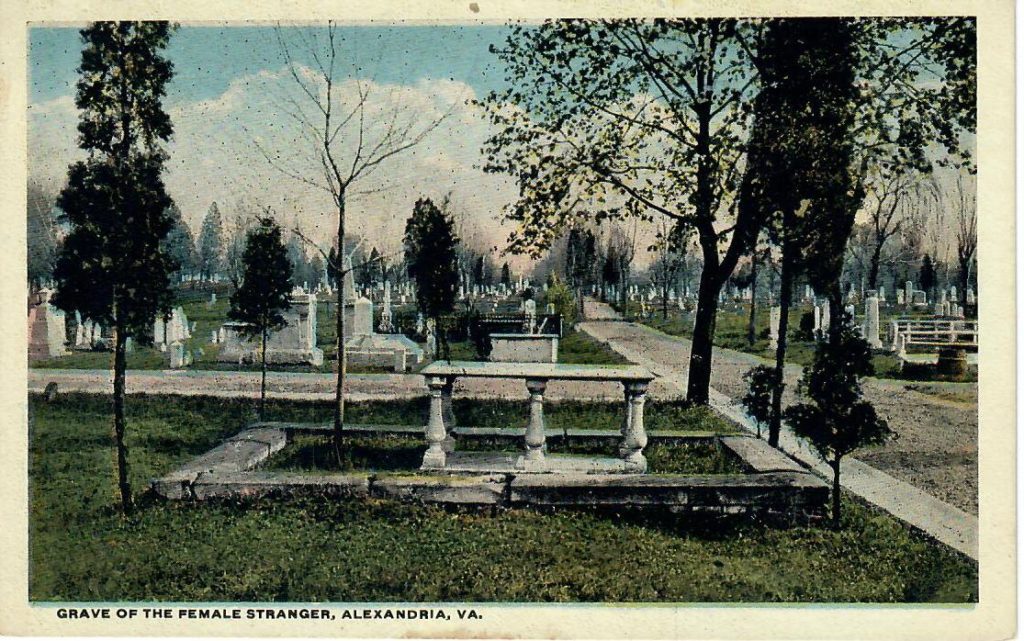
Captain Benjamin Thomas (1811–1856): Merchant, Fire Company Patron, and Tragic Figure
Born in Wales on March 12, 1811, Benjamin Thomas immigrated to the United States and became a prominent citizen of Alexandria, Virginia. Known for his wealth and respected standing in the community, Thomas played a civic role in local affairs and was associated with Alexandria’s firefighting efforts. His likeness is featured on the restored Prettyman Hose Reel Carriage, preserved today at the Friendship Firehouse Museum—testament to his support of early fire companies.
Tragically, his life ended in despair. On September 19, 1856, Thomas died by suicide, reportedly cutting his throat before plunging into a cistern. The shocking details were reported in The Abingdon Virginian, reflecting the somber impact of his passing on the Alexandria community.
Captain Benjamin Thomas is buried in Saint Paul’s Cemetery, Section 4, Lot 235, in the Thomas family lot.
Sources of Information
City of Alexandria, Virginia. (2009, May 28). 414 North Washington Street. Out of the Attic. Retrieved from https://media.alexandriava.gov/docs-archives/historic/info/attic/2009/attic20090528grosvenorhouse.pdf
Hakenson, D. C. (2011). This forgotten land, volume II: Biographical sketches of Confederate veterans buried in Alexandria, Virginia. Donald Hakenson.
Herbert, P. N. (2010). God knows all your names: Stories in American history. AuthorHouse.
Hibbeler, R. (1960). Upstairs at the Everleigh Club (V 9503 N). Volitant Books.
Hurst, B. V. (Ed.). (2021). An Infernal Failure: Little Bighorn Diary 1876 by Dr. Holmes Offley Paudling. Big Byte Books.
Madison, R. L. (2003). Walking with Washington. Gateway Press, Inc.
Moore, G. M. (1949). Seaport in Virginia: George Washington’s Alexandria. Garrett and Massie, Incorporated.
Pippenger, W. E. (2014). Tombstone inscriptions of Alexandria, Virginia (Vol. 5). Heritage Books.
Powell, M. G. (2000). The history of Old Alexandria, VA, from July 13, 1749 – May 24, 1861. Willow Bend Books. Index by Pippenger, W. E.
Virginia Department of Historic Resources. (2022). St. Paul’s Episcopal Cemetery, 2022 NRHP Draft Final. Retrieved from https://www.dhr.virginia.gov/wp-content/uploads/2022/11/100-0143_St_Pauls_Episcopal_Cemetery_2022_NRHP_DraftFinal.pdf
Virginia State Capitol History Project. (n.d.). The 1870 “Capitol Disaster”. Retrieved from http://www.vacapitol.org/disaster.htm

